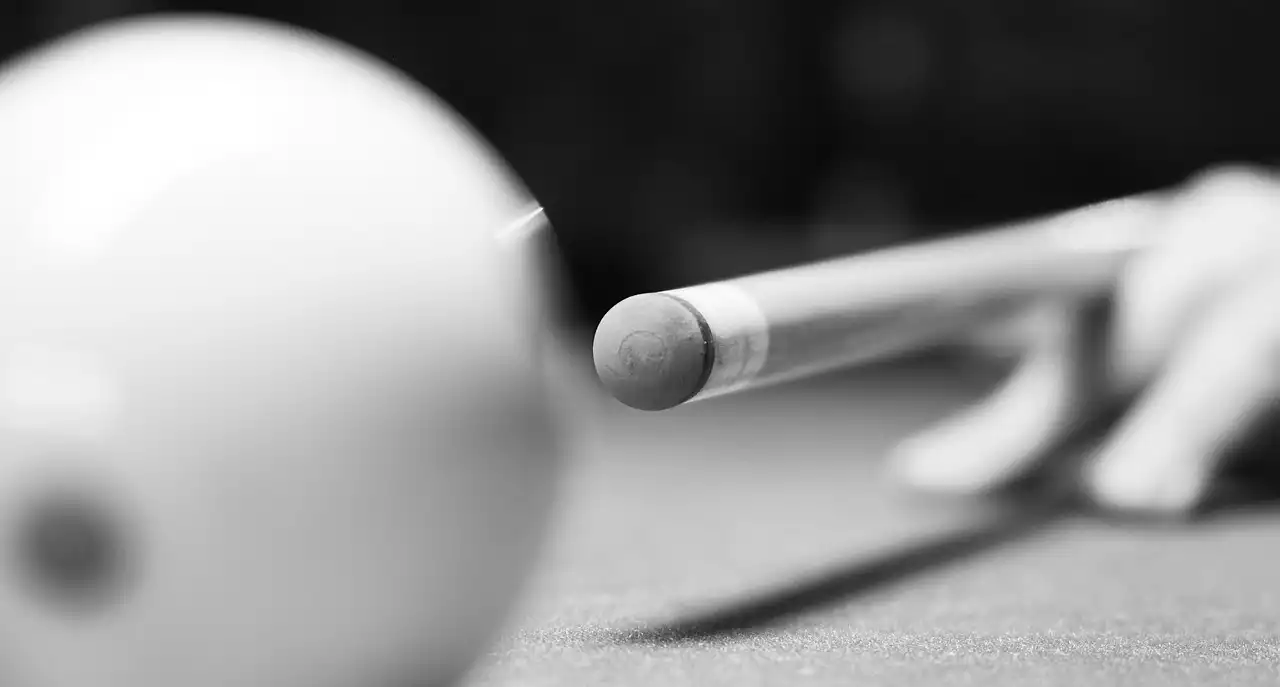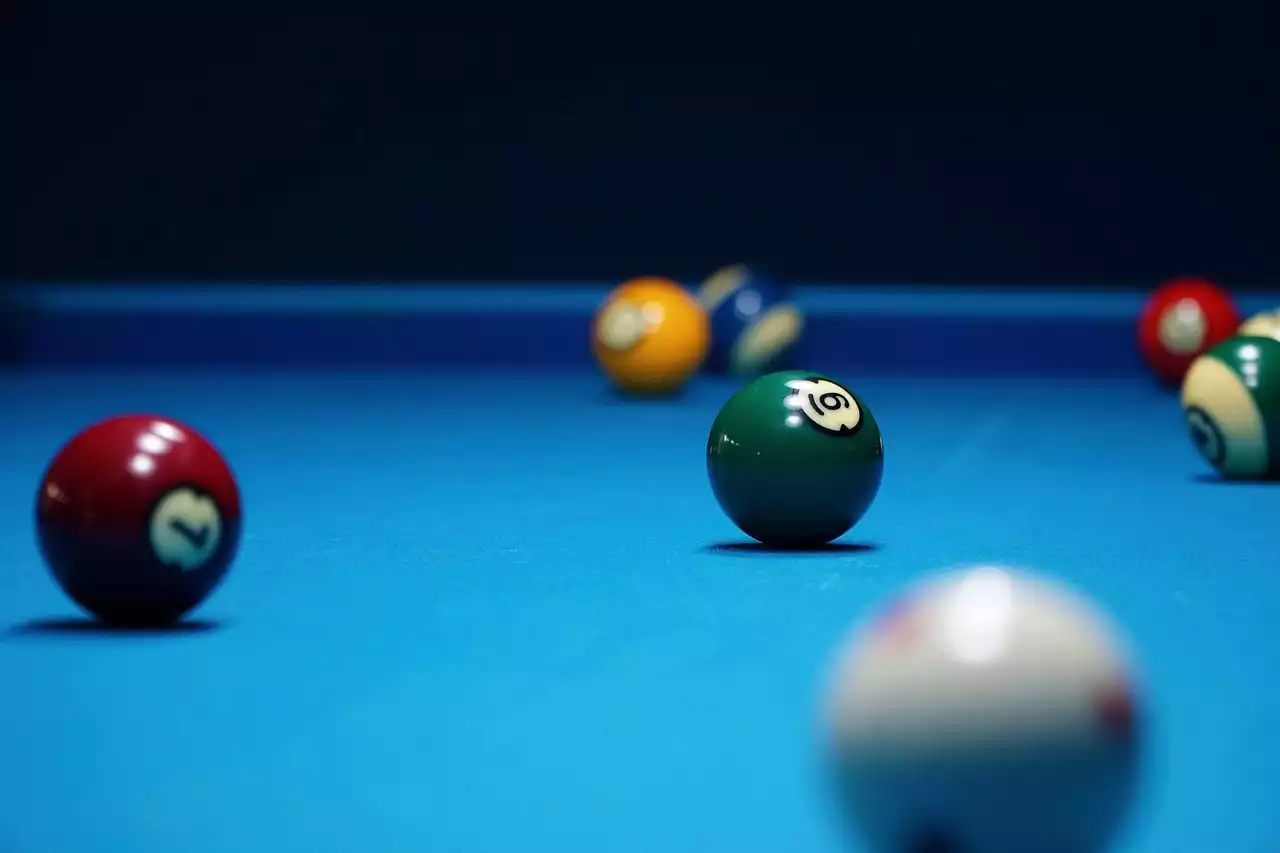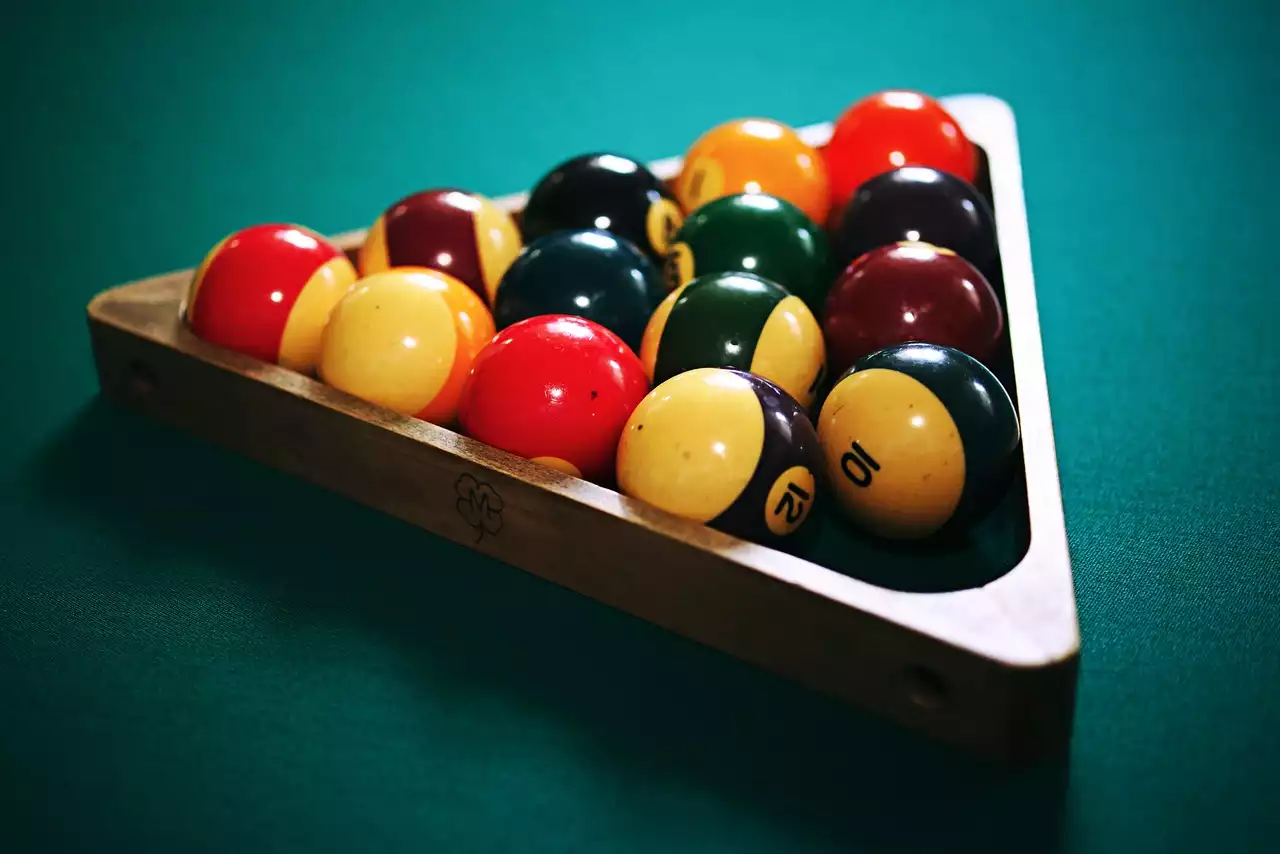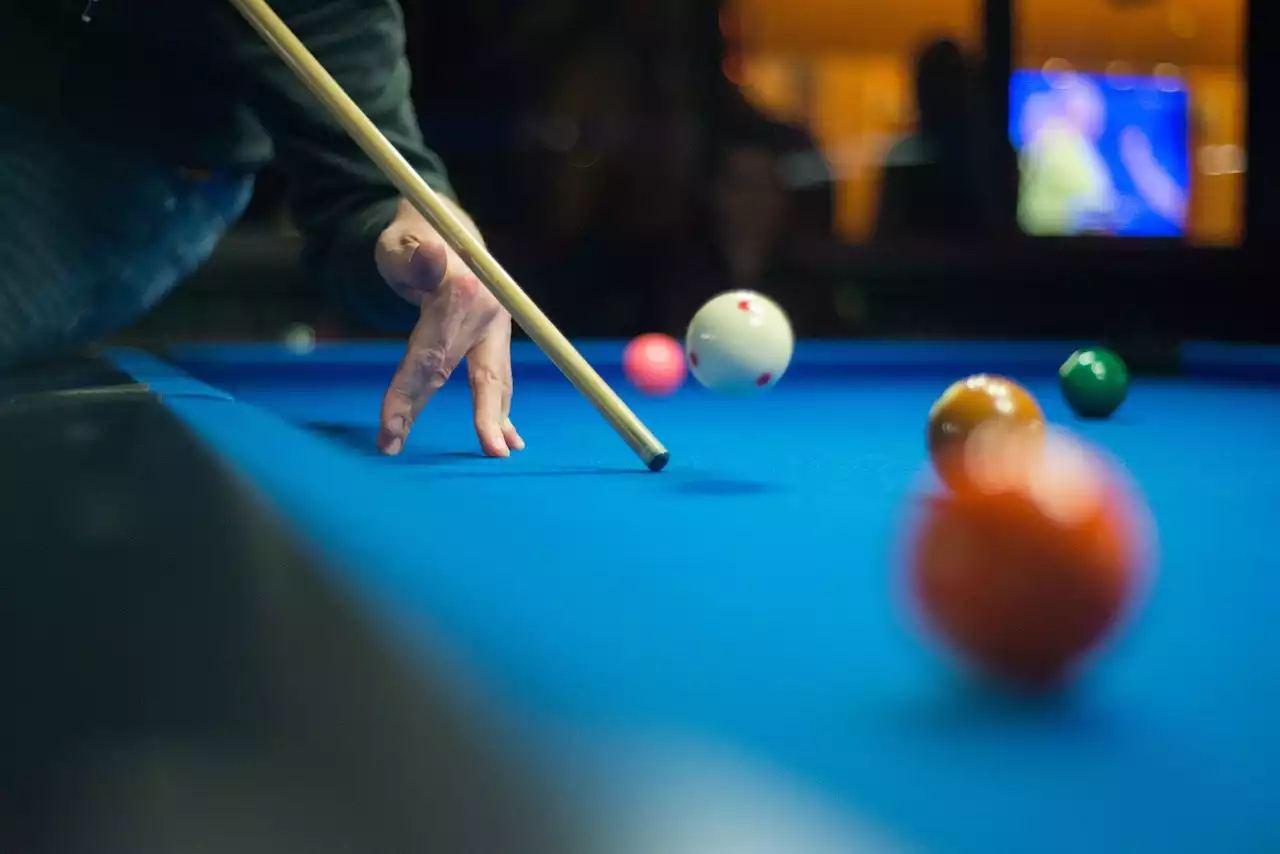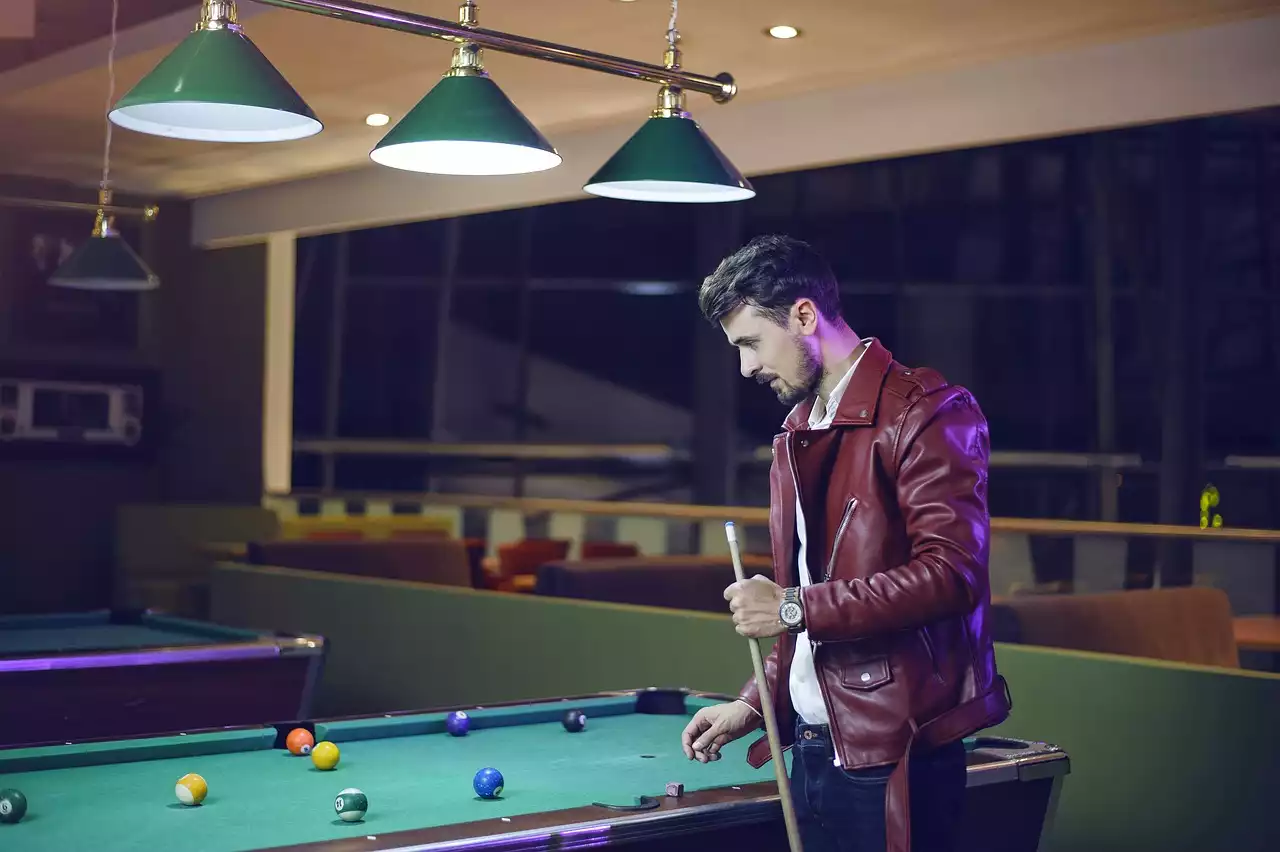Understanding the basics: Cue stick, grip, and stance
Before diving into the more advanced techniques, it's essential to understand the basics of pool shot accuracy. The cue stick, grip, and stance are three fundamental aspects of the game that can make or break your shot.
Firstly, let's talk about the cue stick. Aiming accurately requires control over the stick, so it's crucial to choose a cue stick that feels comfortable and suits your playing style. The length, weight, and tip of the cue stick are all factors that can influence your shot, so take your time to find the right one for you.
Next, let's talk about the grip. The grip is the way you hold the cue stick, and there are several different grips used by players. The most common grip is the closed bridge, where you hold the cue with your thumb, index, and middle fingers. However, some players prefer an open bridge, where the index finger is raised, or a rail bridge, where the cue is placed on the rail for stability. Experiment with different grips to find the one that feels most comfortable and natural for you.
Finally, let's talk about stance. Your stance is the position of your feet and body when taking a shot. A good stance provides a stable base for the shot and allows for smoother movement of the cue stick. The most common stance is the square stance, where your feet are shoulder-width apart and perpendicular to the shot line. However, some players prefer a closed stance, where the back foot is slightly behind the front foot, or an open stance, where the back foot is angled away from the shot line. Experiment with different stances to find the one that works best for you.
Mastering the shot: Cue ball control and aiming techniques
Now that you understand the basics of pool shot accuracy, it's time to master the shot. Cue ball control and aiming techniques are two critical aspects of achieving accuracy on the table.
Cue ball control refers to the ability to control the movement of the cue ball after striking it with the cue stick. This control is essential for setting up shots and sinking balls. One way to improve cue ball control is to practice hitting the cue ball at different speeds and angles. This practice will help you understand how the cue ball reacts to different types of shots and how to adjust your shot accordingly.
Aiming techniques are equally important for achieving pool shot accuracy. There are several different aiming techniques used by players, including the ghost ball method, the tangent line method, and the center-to-edge-of-the-object-ball method. The ghost ball method involves visualizing a ghost ball in front of the object ball and aiming for the center of the ghost ball. The tangent line method involves aiming for the point where the cue ball will contact the object ball and bounce off at a 90-degree angle. The center-to-edge-of-the-object-ball method involves aiming for the edge of the object ball that is closest to the pocket. Experiment with different aiming techniques to find the one that works best for you.
Common mistakes and how to avoid them
Even the most experienced pool players make mistakes that can affect their shot accuracy. The key is to identify these mistakes and learn how to avoid them. One common mistake is lifting your head when taking a shot. Lifting your head can cause your body to move, which can affect the direction and speed of the shot. To avoid this mistake, keep your head down and focus on the shot until the cue ball comes to a stop.
Another common mistake is gripping the cue stick too tightly. A tight grip can cause tension in your arm and affect the smoothness of your shot. To avoid this mistake, loosen your grip and focus on maintaining a relaxed and fluid motion when taking a shot.
Practicing for accuracy: Drills and exercises
Practice makes perfect, and this is especially true when it comes to pool shot accuracy. There are several drills and exercises you can do to improve your accuracy on the table.
One popular drill is the straight-in shot drill, where you practice sinking balls directly into the pocket from different distances. This drill helps you improve your cue ball control and aiming accuracy.
Another useful exercise is the rail shot exercise, where you practice sinking balls that are positioned near the rail. This exercise helps you develop a more precise shot and improves your ability to control the cue ball.
Advanced techniques for expert-level players
If you're an advanced player looking to take your pool shot accuracy to the next level, there are several advanced techniques you can use.
One technique is the jump shot, where you jump the cue ball over an object ball to sink another ball. This shot requires precise timing and control, but it can be a powerful weapon in your arsenal.
Another advanced technique is the masse shot, where you curve the cue ball around an object ball to sink another ball. This shot requires skill and practice, but it can be a valuable tool for getting out of difficult situations on the table.
Choosing the right pool cue for optimal performance
As mentioned earlier, choosing the right pool cue is essential for achieving optimal performance on the table. When choosing a cue, consider factors such as length, weight, tip, and material.
Length is important because it can affect your stance and the amount of control you have over the cue stick. Weight is important because it can affect the power of your shot and the amount of control you have over the cue ball. The tip is important because it can affect the amount of spin you can put on the cue ball, which can be useful for setting up shots. Finally, the material of the cue can affect its durability and overall performance.
Maintaining your pool cue for longevity
Once you've found the perfect pool cue, it's essential to maintain it properly to ensure its longevity and optimal performance. Regular cleaning and maintenance can prevent warping, cracking, and other forms of damage.
To clean your cue, use a soft cloth and a mild cleaner to wipe down the shaft and tip. Avoid using abrasive cleaners or rough cloths, as these can damage the cue. Also, store your cue in a cue rack or case to protect it from bumps, scratches, and other types of damage.
Tips for playing in tournaments and competitions
If you're serious about pool and want to compete in tournaments and competitions, there are several tips you should keep in mind. Firstly, practice regularly to improve your skills and build confidence. Secondly, stay focused and avoid distractions during games. Thirdly, learn from your mistakes and analyze your opponents' playing style to gain a competitive edge.
It's also essential to take care of yourself and stay in good physical and mental condition. Proper rest, nutrition, and hydration can improve your focus and stamina on the table.
Achieving pool shot accuracy is within reach
In conclusion, achieving pool shot accuracy is within reach for anyone willing to put in the time and effort to master the game. By understanding the basics, mastering the shot, avoiding common mistakes, practicing regularly, and using advanced techniques, you can improve your accuracy and take your game to the next level. By choosing the right pool cue and maintaining it properly, you can ensure optimal performance and longevity. And by staying focused and taking care of yourself, you can compete at the highest level and achieve your goals on the table. So, grab your cue and get ready to aim for success.
